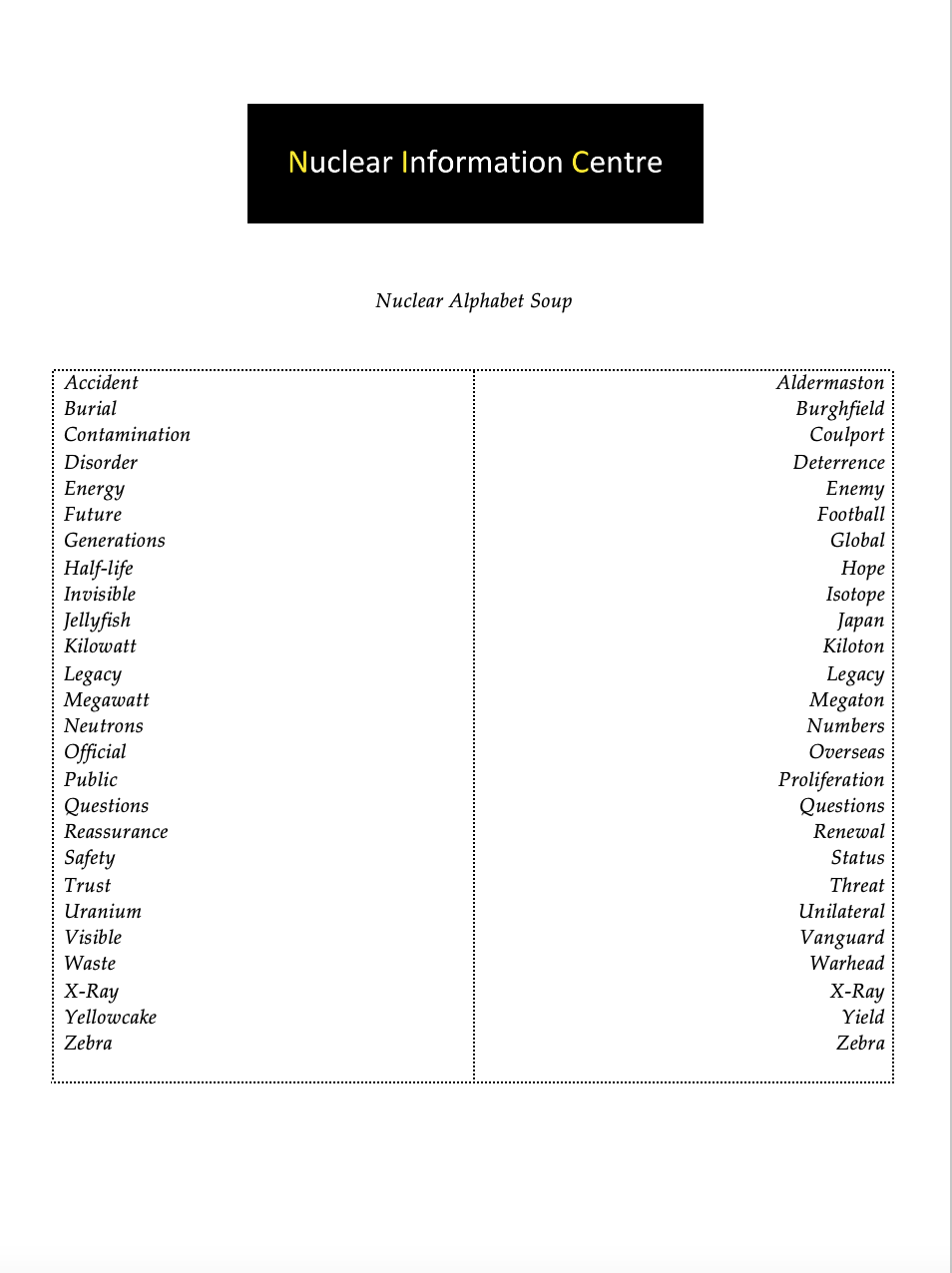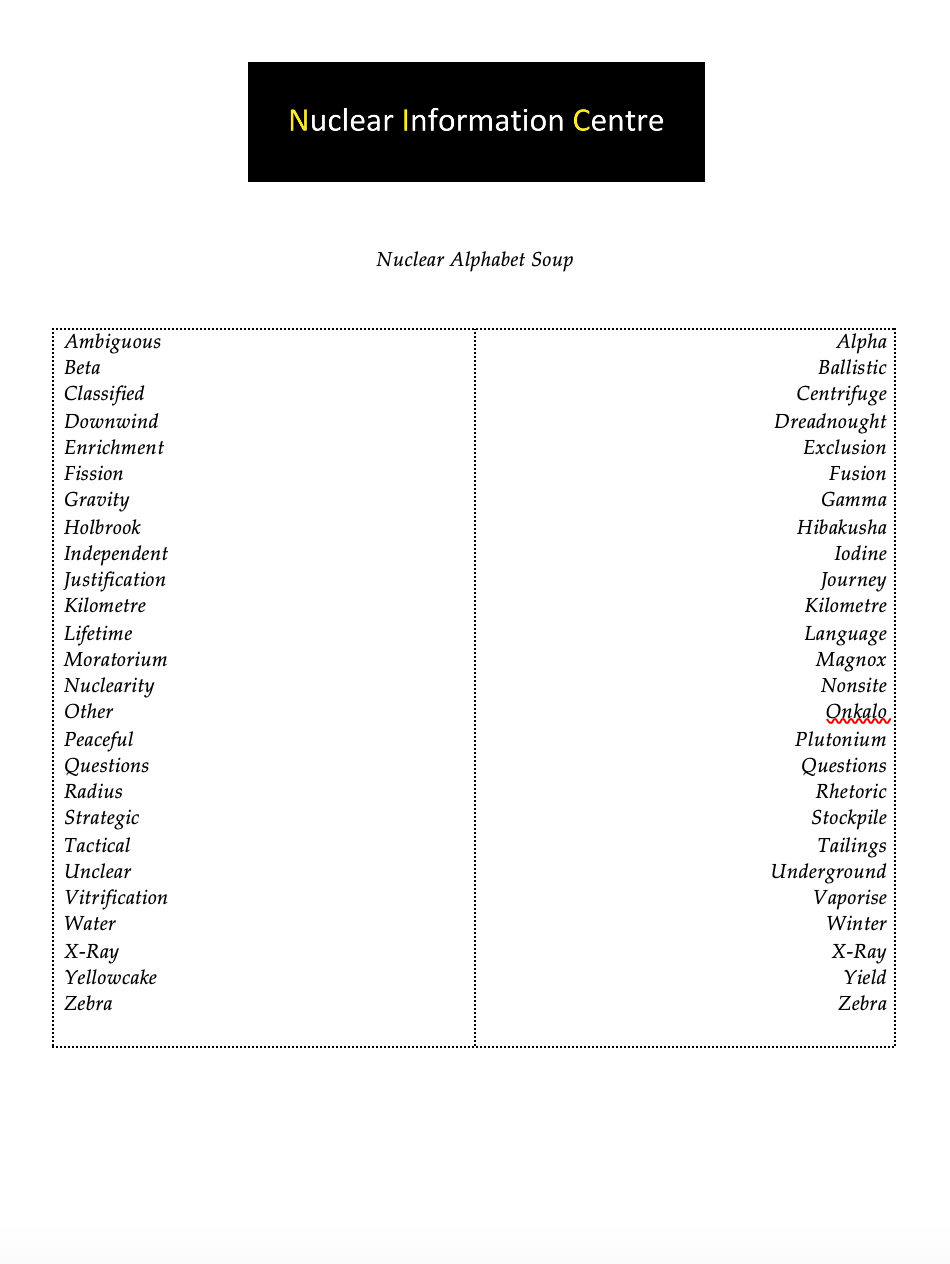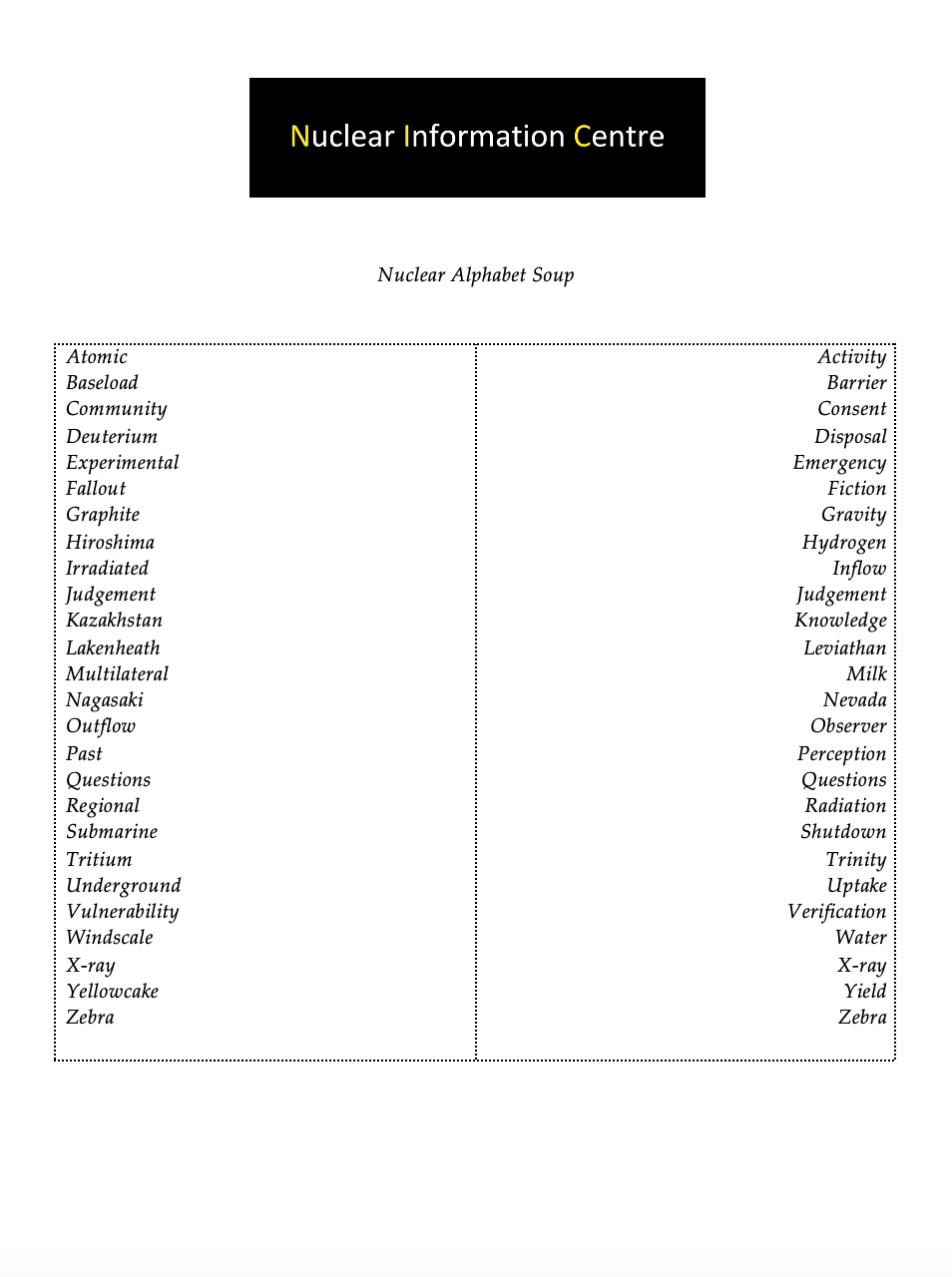
Nuclear Alphabet Soup (2023). MP3 files (Five audio-textual recipes: durations 0m 29s, 0m 34s, 0m 35s, 0m 36s and 0m 35s - looped)
[NIC/NW/011]
Assembled from rummaging around in overflowing civil and military nuclear store cupboards, these five overlapping recipes combine to create a less than delicious audio-textual radioactive broth. Along with our existing and still-to-be-lived-with global nuclear legacies, these recipes are very much engineered to be passed down from one generation to another.
The UK’s civil and military nuclear activities have been strategically intertwined since the late 1940s. Arguably, the civil nuclear industry might not have existed at all were it not for the post-war government’s all-consuming desire to be part of the exclusive club of emerging nuclear weapons states. This was due in part to the US protecting their own weapons programme following the nominally collaborative wartime Allied Mahnattan project. However, with the US no longer prepared to share their nuclear activities and the government not wanting to accept a perceived loss of global status, the UK unilaterally entered the nuclear arms race.
This was first and foremost a political choice.
The first reactors or “piles” at Windscale were built exclusively for the production of plutonium from which to manufacture the fissile cores of atomic bombs. Even the first two commercial nuclear power stations of Calder Hall (also on the Windscale site) and Chapelcross in Scotland were constructed for the primary purpose of producing more weapons-grade plutonium but these also began to produce electricity for the National Grid from 1956 and 1959 respectively. Since then, UK civil and military programmes have more or less run in parallel but will ultimately be reaquainted in the form of radioactive waste from spent nuclear fuel from the UK’s commercial power stations and decommisioned military nuclear submarines.
Sellafield (formally the Windscale site) also currently plays host to the majority of the UK’s legacy plutonium inventory left over from decades of production and re-processing activities. In addition to this, the vast majority of the UK’s high level radioactive waste also resides at Sellafield, pending future disposal in a GDF (Geological Disposal Facility) which is the government’s preferred long-term option. A “consent-based” GDF siting process is currently underway, based in part on the model adopted in Finland who have almost completed initial construction of their GDF at Onkalo which will be ready to accept the first consignments of waste in 2024/25. The Finnish GDF has been decades in the making wheras the UK is currently only five years into their process. Assuming a suitable site and willing community is found the estimated date for starting to populate a GDF, once constructed, will be some time in the 2040s.
In the meantime, the current UK government is continuing its mission to create more high level nuclear waste through new civil fission power plant projects. In addition to Hinkley Point C which is currently under construction (and the seemingly imminent Sizewell C), they are also actively promoting and funding the development of Small Modular Reactors (SMRs) as part of the future energy production stategy. However, it should be remembered the UK military has employed SMRs within its nuclear submarines since the 1960s with a single reactor servicing a crew of around just 200 people so we can perhaps join the dots in terms of understanding where politcal priorities have been in terms of deploying SMR technology for civil energy generation. Since late 2016 the UK has been building four new Dreadnought Class nuclear submarines to replace its ageing Vanguard fleet of Trident missile armed boats although as of 2024, civil SMR technology is still going through the design phase.





Information last updated - Thu 20 Jun 2024
Back